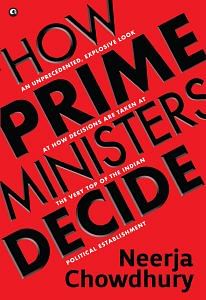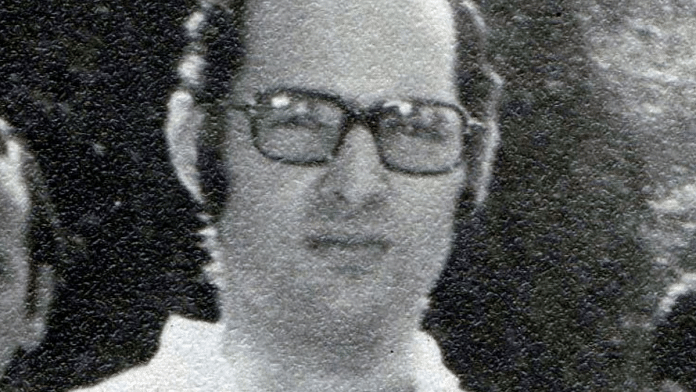Balasaheb Deoras tried hard to meet Sanjay and Indira during the Emergency years. ‘But Mrs Gandhi refused,’ revealed T. V. Rajeswar, who as deputy director of the Intelligence Bureau had a ringside view of events of the period.
Knowing the influence Sanjay exercised on his mother, the RSS was also drawn to him because of his anti-communist and pro-America views. Panchjanya, the RSS mouthpiece, praised him. A Pune Marathi daily, Tarun Bharat, also associated with the RSS, even brought out a ‘Sanjay Gandhi Special Number’.
Balasaheb eventually managed to ‘quietly establish a link with the PM House’—according to Rajeswar. Kapil Mohan was a go-between Sanjay and the RSS. Later, after Sanjay’s death, Mohan was to facilitate meetings between Rajiv Gandhi and Bhaurao Deoras, at the instance of Indira Gandhi. (See Chapter 2 for more details.) When the diabetic, and insulindependent Balasaheb’s health took a turn for the worse, it was Bhaurao who became his pointsperson. He was a frequent visitor to Kapil Mohan’s house at 46, Pusa Road.
Indira Gandhi decided to respond to Balasaheb’s overtures just before the 1977 elections. She sent a message to him with the request ‘Chunav se Sangh alag ho jaye (The RSS should stay away from the elections)’, according to BJP leader K. N. Govindacharya who was a protégé of Bhaurao’s and worked closely with him. She urged Balasaheb not to support the Opposition parties, and to prevent the Jan Sangh from casting its lot with the Janata Party.
Also read: Closeness to Indira Gandhi made bigwigs call RKD ‘Dhawan Saab’. He even made her…
Balasaheb sent word back that it was too late for them to pull back. Elections were underway. It was not possible to do a turnaround. ‘We cannot leave them (Janata Party) midstream. But we will talk after elections,’ he said, keeping the door ajar for future communication.
Since Balasaheb had not agreed to her proposal he was kept in jail till 21 March 1977, unlike others who had been released after the announcement of elections on 18 January 1977.
‘Indira Gandhi was in touch with RSS leader Eknath Ranade, with whom she had a good relationship,’ Govindacharya said. ‘The line of communication was from Eknath Ranade to Moropant Pingle to Balasaheb Deoras.’ She had got to know Ranade on one of her trips to the South when she visited the Vivekananda Rock Memorial in Kanyakumari which he had set up. She was very impressed with what she saw. After that she kept in touch with Ranade, a pracharak in the Sangh since 1938. She was constantly looking for independent channels to give her feedback about the RSS—its thinking and the moves it proposed to make. Even when Golwalkar was sarsanghchalak of the RSS, ‘she used to keep in touch with Ramakant Patil of the Sarvodaya, who had close connections with the RSS’, according to Govindacharya.
On his part, Ranade opposed political agitations by the ABVP during the Emergency. So, when Congress leaders P. C. Sethi and V. C. Shukla began to target Ranade, alleging the Vivekananda Kendra he led was funded by the RSS, Indira Gandhi got them to back off. Instead, she made Ranade a member of the Indian Council of Cultural Relations (ICCR). This made some in the RSS suspicious; they feared she might split the RSS as she had split the Congress.
Just as the RSS brass had reached out to her for help, she too used the RSS for her purposes—but carefully kept a distance between the organization and herself. For all her opposition to the RSS, she had managed to get it to support the Emergency. Sensing the unhappiness amongst the Muslims about the Congress, she wanted to Hinduize her politics, aware that a silent nudge from the RSS or even a neutral stand by them towards her might help.
‘The RSS helped Indira Gandhi come to power in 1980,’ maintained Anil Bali. ‘She knew the RSS had supported her,’ Bali claimed, ‘but she never acknowledged it publicly. She used to admit privately that had it not been for the support by the RSS, she could not have won 353 seats, one more than she had won in her heyday in 1971.’
Also read: Rajiv Gandhi had wanted to end impasse in Kashmir and saw Farooq Abdullah as…
Karan Singh also hinted that ‘maybe she was in touch with the RSS…. She had her own calculations.’ He added, in her defence, ‘(However), she was neither anti-Hindu, nor anti-Muslim.’ T. V. Rajeswar was categorical in his assertion that the RSS had supported her in the 1980 elections. ‘(The) RSS,’ Rajeswar said, ‘had specifically conveyed its support to the Congress in the post Emergency elections.’
Though he did not subscribe to this view, Govindacharya admitted that many Congress leaders ‘believed it to be true’. What was however true, he said, was that the Congress had sought the RSS’s help in several elections. ‘Even before the 1989 elections…R. K. Dhawan had sent word, seeking our (RSS) help to support the Congress,’ Govindacharya recalled. ‘I went to see him. I remember he fed me samosas and kaju.’ ‘After all,’ Dhawan told him, ‘you had supported us in the earlier elections also (referring to 1980 and 1984).’ Before the 1984 elections, RSS leader Nanaji Deshmukh had exhorted people to vote for the Congress: ‘Naa jaat par naa paat par, mohar lagegi haath par (Go neither for caste or creed, only stamp the hand symbol [of the Congress party]).’
In 1980, the RSS might have viewed Indira Gandhi with favour for another reason—the Janata Party’s decision to project Jagjivan Ram, a Dalit, as its prime ministerial candidate did not go down well with the RSS’s upper-caste supporters. Its leadership was also unhappy with Atal Bihari Vajpayee who had publicly criticized the organization in a signed article in the Indian Express in August 1979. ‘Why does it (RSS) not open its doors to non-Hindus?’ he had asked. He had asked the Sangh leadership to clarify ‘that by Hindu Rashtra (it meant) the Indian nation which includes non-Hindus as equal members.’
In 1980, Vajpayee was trying to secularize his image while Indira Gandhi was trying to Hinduize the face of the Congress.
 This excerpt from ‘How Prime Ministers Decide’ by Neerja Chowdhury has been published with permission from Aleph Book Company.
This excerpt from ‘How Prime Ministers Decide’ by Neerja Chowdhury has been published with permission from Aleph Book Company.



